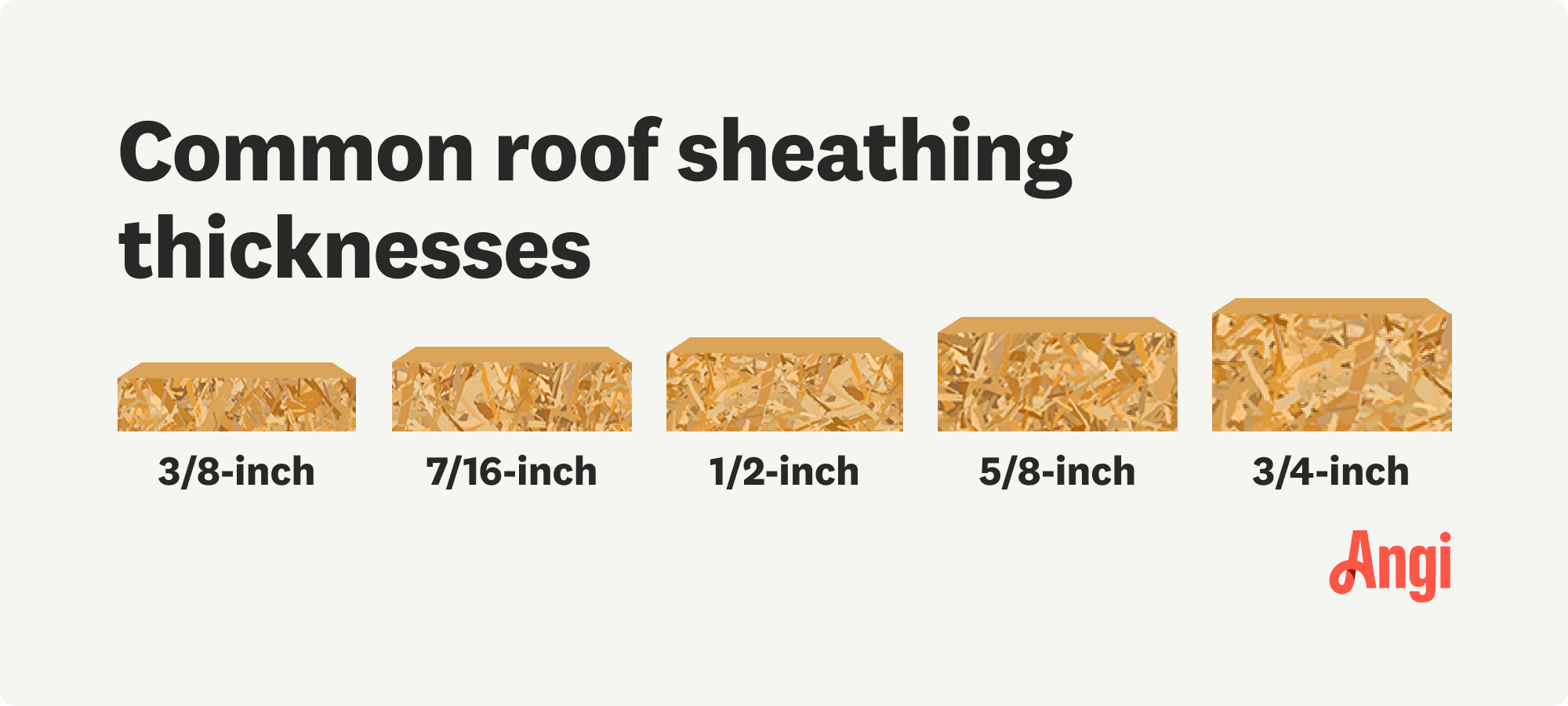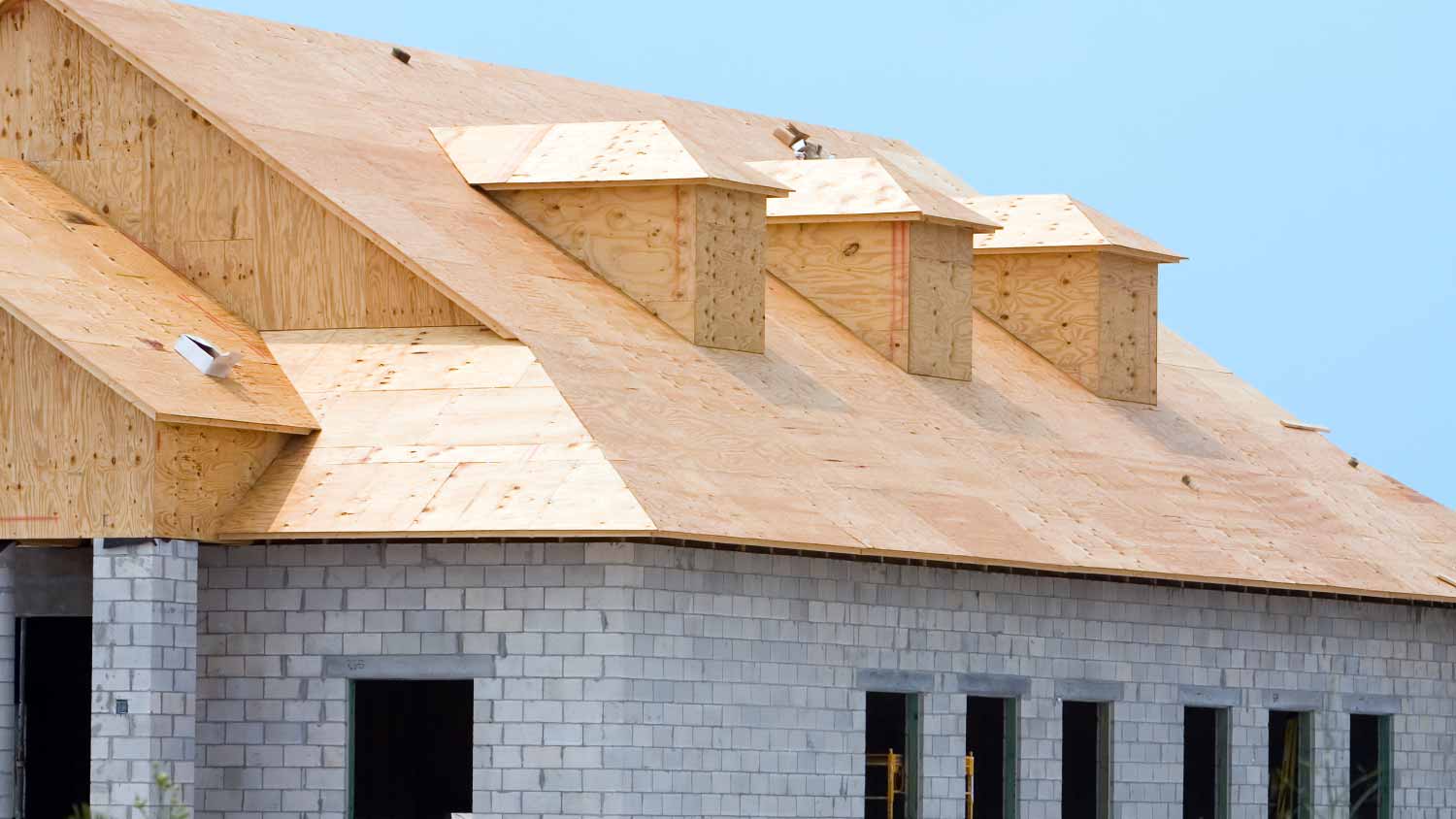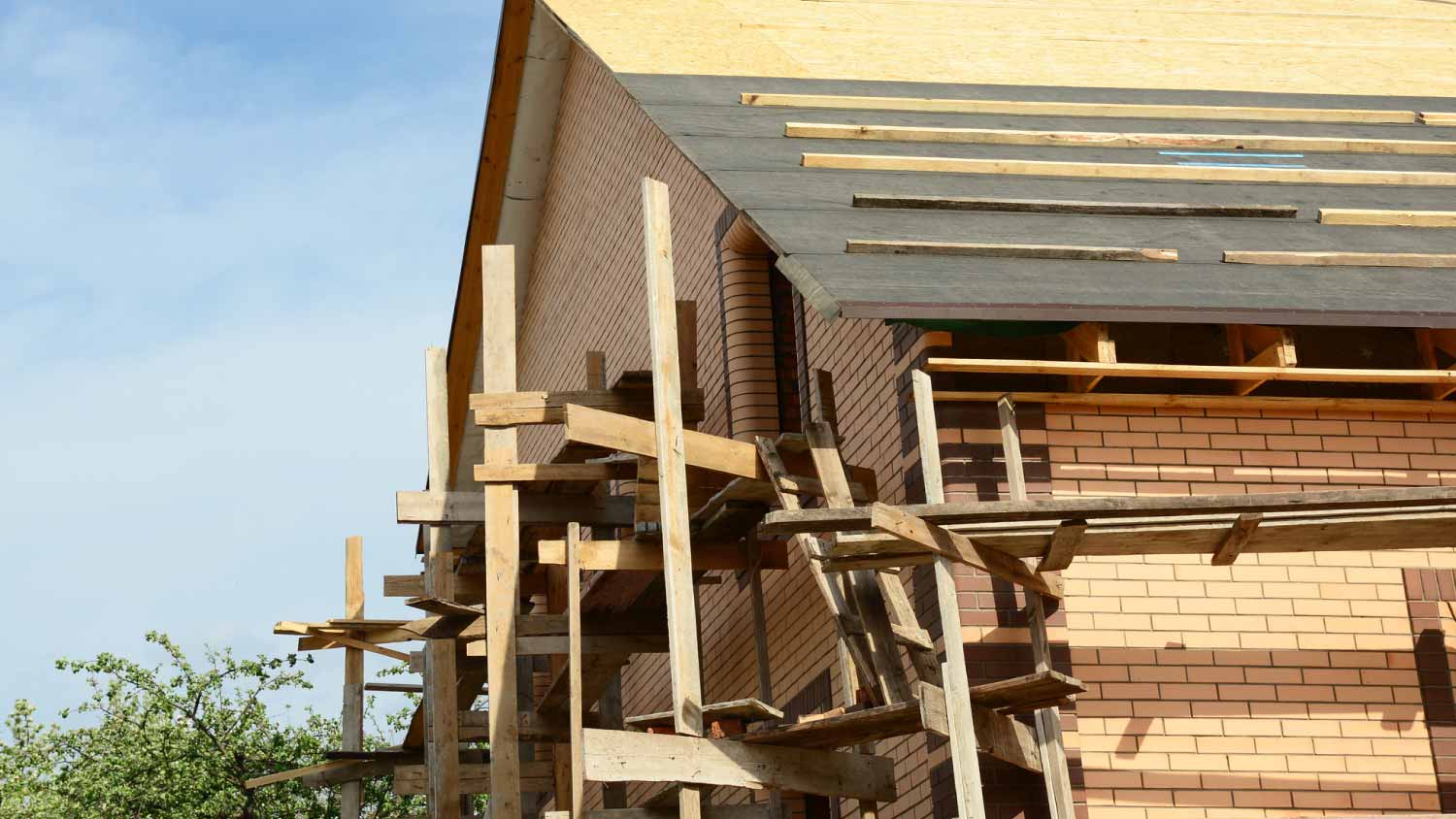
Thatched roofs add tons of old-world charm to your home and provide outstanding insulation. Learn about thatched roof costs and what affects your final price.
Sheath any concerns about the thickness of your roof sheathing


Roof sheathing supports the weight of roofing materials and prevents sagging and other damage.
Plywood and oriented strand board (OSB) are two of the most common sheathing materials.
Sheathing ranges in thickness from 3/8 to 3/4 of an inch.
The most common sheathing thicknesses are 7/16, 1/2, and 5/8 of an inch.
Replacing your roof requires the right material for structure and support. Roof sheathing, also known as roof decking, is the foundation your roofing material is affixed to, acting as a support between the rafters and the roof itself.
It’s important to choose the right roof sheathing thickness to support the roof's weight and prevent sagging, bending, or—in the worst-case scenario—collapse. Learn more about roof sheathing and how to determine the right thickness to support your roof and protect your home.
Roof sheathing comes in 8-by-4-foot sheets and is available in thicknesses ranging from 3/8 to 3/4 of an inch. The most commonly used roof sheathing thicknesses are 7/16, 1/2, and 5/8 of an inch. Choosing the right thickness for roof sheathing is critical for the structural stability of your roof—it needs to be thick enough to support the weight of the roofing material plus any additional expected weight like snow or ice.
Roof sheathing also provides an additional layer of protection from water damage, protecting your rafters and roof insulation. The thicker the roof sheathing, the more stable your roof will be, especially when working with heavy roofing materials or in areas that receive a lot of snow and ice.


Different roof sheathing materials vary in thickness depending on their strength and weight-supporting capacity. Plywood and oriented strand board (OSB) are the most commonly used sheathing materials.
| Material | Rafter Spacing (in.) | Minimum Thickness (in.) |
|---|---|---|
| Plywood | 16–32 | 1/2–5/8 |
| Oriented Strand Board (OSB) | 16–24 | 7/16–5/8 |
Plywood is one of the most popular sheathing materials. It’s often favored in wetter climates due to its ability to dry quickly and retain its original shape after swelling from moisture. Plywood commonly comes in sheets ranging from 1/2 to 3/4 of an inch thick. Plywood sheathing costs an average of $1.40 to $5 a square foot, although lumber prices can fluctuate considerably. Because plywood isn’t quite as strong as oriented strand board, its minimum thickness is slightly thicker.
Oriented strand board (OSB) is made from compressed wood fibers mixed with resin. It is structurally stronger than plywood and comes in sheets in thicknesses from 7/16 to 5/8 of an inch. OSB sheathing averages between $0.65 and $2.40 per square foot, making it a more cost-effective option than plywood. One caveat with OSB, however, is that it warps when wet, so it may not be the best choice for areas that receive a lot of rain.
Determining the right thickness for roof sheathing is a matter of safety and structural stability, so it may be best to leave this job to the pros. If you’re working with a local roofing company, your roofer will be able to determine the appropriate thickness for your roof sheathing.
The necessary sheathing thickness will depend on local building codes and the specifics of your roof’s construction and materials. Check with your local building authority to see if there are any required minimum measurements before getting started on your roof. In most cases, 7/16 of an inch when working with OSB or 1/2 an inch for plywood will be the minimum thickness you should choose for lighter roofing materials.
To find out how much sheathing you’ll need once you determine the proper thickness, calculate your roof’s square footage and divide that by the square footage per sheet of sheathing, allowing an additional 10% to 15% allowance for waste and errors.

There’s no one-size-fits-all answer for the right thickness for roof sheathing. Every roof will have different needs, and various factors will affect which thickness is appropriate for your roof.
The most important function of roof sheathing is to support the roofing material, so the material you use will be a deciding factor in how thick your sheathing should be. Heavier roofing materials like slate, clay, and wood shingles require thicker sheathing and lighter materials like asphalt shingles can often use thinner sheathing.
The roofing material you choose will affect almost every aspect of your roof replacement cost, so be sure to factor any additional costs, like sheathing, into your budget.
In addition to the weight of the roofing materials, you need to consider the expected added weight of snow or ice on the roof in colder climates. Snow and ice can put tremendous pressure on a roof, so it’s critical that the sheathing material is thick enough to support not only the roof itself but also the added weight that winter weather can bring.
The distance between rafters can also affect how thick your roof sheathing needs to be. Roof rafters are typically spaced between 16 and 32 inches apart. The wider the distance, the more stress is placed on the center of the sheathing, so rafters that are farther apart require thicker sheathing.
Having the wrong thickness roof sheathing is one of the most serious roofing mistakes you can make. If your sheathing isn’t thick enough to support the roof's weight, you could end up with a roof that’s sagging, bowing, or even collapsing under its own weight. Roof damage can also lead to water intrusion, mold growth, and damage to your home from the top down.
A failing roof is a serious safety issue, so it’s important to address it as soon as you suspect there’s a problem. Problems with your sheathing will quickly become evident, so if you see any buckling or sagging roof sections, water damage, or leaks, it’s time to call in the pros. Choose a roofer who can identify the problem with your sheathing and determine the correct replacement material and thickness to prevent future problems.
The team at Right Hand Roofing is extremely knowledgeable and very professional when it comes to the entire roof inspection and replacement process. They also made the insurance process seamless. I would recommend them to anyone looking for roofing services!
Anderson Roofing is an excellent company! Cody came out in some of the worst weather we had this year and performed a temporary repair to our roof. When the weather cleared Cody and his brother came back with matching bundles of architectural shingles and barrier materials and perfectly...
Frank Speck, representing Homewerx, came by promptly after our problem started shortly after we arrived in our home in Summerville, SC from New York State. After the estimate, Billy Martin stopped by with three workers and replaced and sealed two vent boots. About three weeks later during a...
From average costs to expert advice, get all the answers you need to get your job done.

Thatched roofs add tons of old-world charm to your home and provide outstanding insulation. Learn about thatched roof costs and what affects your final price.

Torch down roofing costs are based on roofing materials and labor, among other factors. Read our guide to learn more about the costs of this flat roof material.

The cost to install vinyl soffit on your home depends on several factors, including the soffit length, condition, and the working height.

Painting a metal roof helps it look great and last for decades. Use this guide to learn how to paint a metal roof, whether you DIY the job or hire a pro.

Do roof vents work? Is roof ventilation necessary? Can I have too much ventilation? Here are the top 11 myths about roof vents and the real answers you deserve.

Even if you were meticulous when painting your house, it's possible that paint got onto your roof. Read this guide to learn how to get paint off shingles.